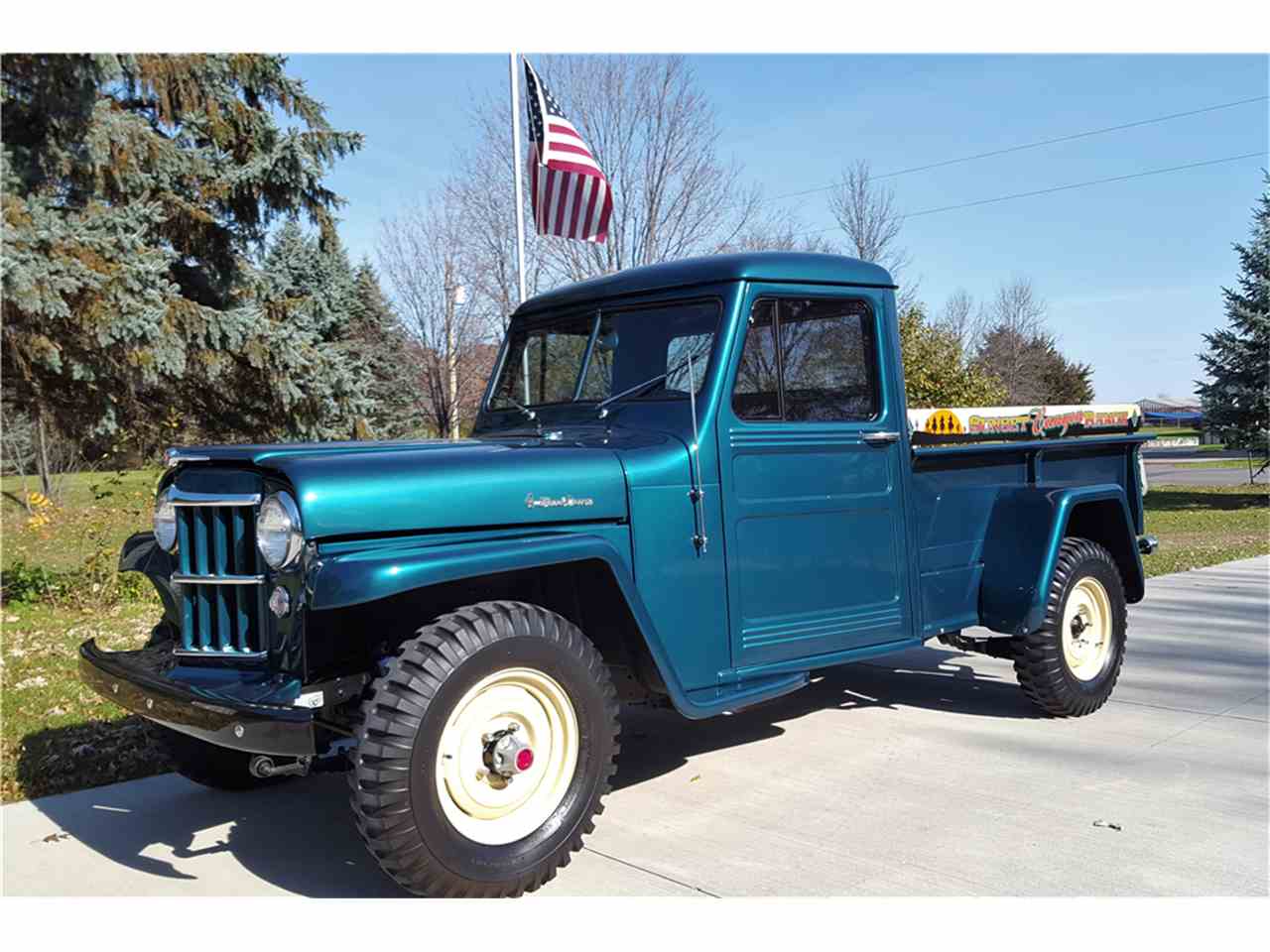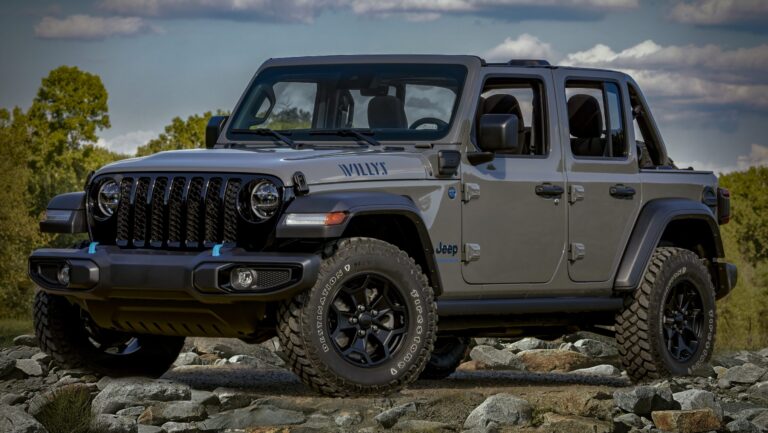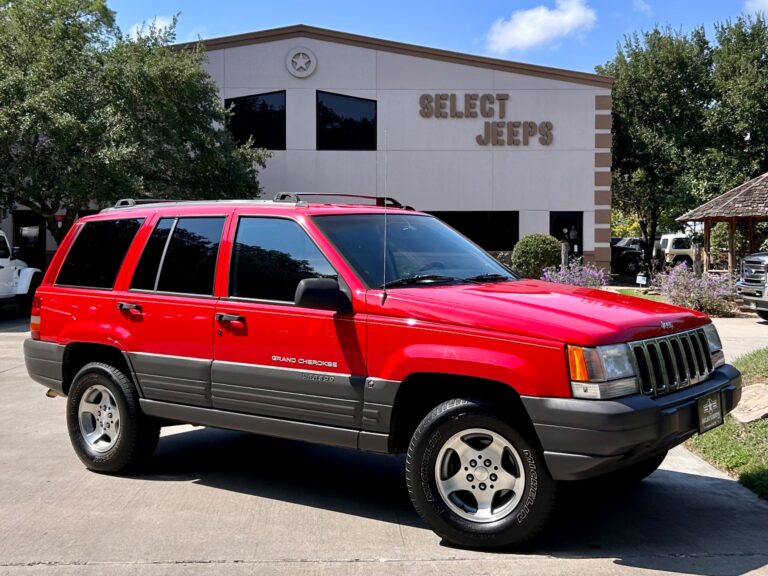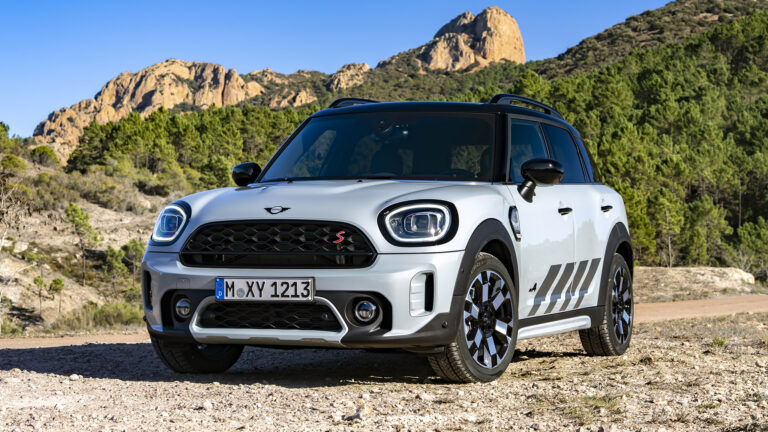1955 Willys Jeep For Sale: Your Guide to Owning a Piece of Automotive History
1955 Willys Jeep For Sale: Your Guide to Owning a Piece of Automotive History jeeps.truckstrend.com
For automotive enthusiasts and history buffs alike, the mention of a "1955 Willys Jeep For Sale" evokes a sense of rugged charm, pioneering spirit, and an undeniable connection to a pivotal era of American manufacturing. More than just a vehicle, a 1955 Willys Jeep represents a tangible link to a time when simplicity met robust utility, forging an icon that continues to capture hearts worldwide. Whether you’re a seasoned collector, an off-road adventurer, or simply someone yearning for a unique classic, understanding the nuances of acquiring one of these timeless machines is crucial. This comprehensive guide will navigate the journey of finding, evaluating, and ultimately owning a 1955 Willys Jeep, transforming a potential purchase into a fulfilling experience.
The Enduring Legacy of the 1955 Willys Jeep
1955 Willys Jeep For Sale: Your Guide to Owning a Piece of Automotive History
To appreciate a 1955 Willys Jeep is to understand its lineage. The Willys-Overland company, synonymous with the original "Jeep" that served valiantly in World War II, transitioned its military designs into civilian models known as "CJ" (Civilian Jeep). By 1955, Willys Motors, as it was then known, was offering two distinct, yet equally iconic, CJ models: the CJ-3B and the newly introduced CJ-5.
The CJ-3B, affectionately known as the "High Hood" due to its taller grille and hood designed to accommodate the F-head "Hurricane" engine (though earlier models retained the L-head "Go-Devil"), continued the direct lineage of the wartime MB and the earlier CJ-2A and CJ-3A. It was a compact, no-nonsense workhorse, prized for its agility and durability.
The CJ-5, launched in 1955, marked a significant evolution. Based on the M38A1 military Jeep, it featured a slightly longer wheelbase, softer lines, and a more comfortable ride (relatively speaking, for a Jeep of that era). The CJ-5 would go on to become the longest-produced Jeep model, spanning nearly three decades, making the 1955 model year a special launch edition. Both models embodied the core Willys philosophy: simple, tough, and supremely capable off-road. Their appeal today lies in their unadulterated mechanical nature, easy maintenance (for those with basic mechanical skills), and the sheer nostalgia they evoke. Owning one isn’t just about driving; it’s about preserving a piece of automotive heritage.
What to Look For When Buying a 1955 Willys Jeep
When a "1955 Willys Jeep For Sale" sign catches your eye, it’s essential to approach the inspection with a keen eye and a critical mind. These vehicles are nearly 70 years old, and their condition can vary wildly.
- Body and Frame Integrity: Rust is the primary adversary of any vintage vehicle. Thoroughly inspect the frame rails for cracks, bends, or excessive corrosion, especially around spring mounts and crossmembers. On the body, pay close attention to the floorboards, hat channels (the structural supports under the floor), fenders, tailgate, and the area around the windshield frame. Look for bubbling paint, which often indicates hidden rust, or signs of poor bodywork and excessive Bondo.
- Engine and Drivetrain:

- Engine: The CJ-3B typically houses the "Hurricane" F-head four-cylinder engine (some earlier production 1955 CJ-3Bs might still have the "Go-Devil" L-head), while the CJ-5 was exclusively equipped with the Hurricane. Check for oil leaks, unusual smoke from the exhaust (blue for oil, white for coolant), and strange noises (knocking, ticking). Ensure it starts easily and idles smoothly.
- Transmission and Transfer Case: Most 1955 models came with the T-90 three-speed manual transmission and the legendary Dana 18 transfer case. Test all gears, including reverse, and engage 4-wheel drive (both high and low range) to ensure the transfer case shifts smoothly and the front axle engages. Listen for grinding or whining noises.
- Axles: Check for excessive play in the universal joints (U-joints) and differential leaks.
- Brakes and Steering: A functional braking system is paramount. Inspect brake lines for corrosion, and test the pedal feel (it should be firm, not spongy). Check for excessive play in the steering wheel, which could indicate worn steering box, tie rods, or kingpins. These are simple systems, but wear can lead to unsafe conditions.
- Electrical System: Original 1955 Willys Jeeps typically ran on a 6-volt electrical system. Many have been converted to 12-volt for easier starting and accessory compatibility. Confirm which system is present and ensure all lights, gauges, and the horn are operational. Check wiring for signs of fraying or amateur repairs.
- Interior and Accessories: Assess the condition of the seats, gauges, and any aftermarket accessories like winches, PTO (Power Take-Off) units, or aftermarket tops. Originality in the interior can add significant value.
- Documentation: A clean title is non-negotiable. Look for any service records, previous registration papers, or historical documentation that can shed light on the vehicle’s past.


Understanding the Different 1955 Willys Jeep Models
As mentioned, 1955 was a transition year for Willys, offering both the end of one era and the beginning of another.
- 1955 Willys CJ-3B: This "High Hood" model is recognizable by its distinct tall grille and hood line, a necessity to clear the taller Hurricane F-head engine. It retains a very classic, almost utilitarian aesthetic, closely resembling its military ancestors. Parts are generally interchangeable with earlier CJ models, making maintenance relatively straightforward. If you’re looking for the quintessential "Jeep" look that directly echoes the WWII era, the CJ-3B is a strong contender.
- 1955 Willys CJ-5: Introduced this year, the CJ-5 adopted a more rounded body style, a slightly longer wheelbase (81 inches vs. the CJ-3B’s 80 inches), and a more integrated front fender design. It was marketed as a more refined and comfortable option for civilian use, though still incredibly rugged. The CJ-5 became the standard for civilian Jeeps for decades. Its availability of reproduction parts is excellent due to its long production run.
The choice between a CJ-3B and a CJ-5 from 1955 often comes down to personal preference for aesthetics and slight differences in driving dynamics. Both are highly capable and desirable classic Jeeps.
The Buying Process: From Inspection to Ownership
Finding a "1955 Willys Jeep For Sale" can happen in various places, from local classifieds to specialized online marketplaces and auctions.
- Setting a Budget: Beyond the purchase price, factor in potential costs for immediate repairs, registration, insurance, and any planned restoration work.
- Where to Look:
- Online Marketplaces: Bring-a-Trailer, eBay Motors, ClassicCars.com, Hemmings, Facebook Marketplace, and dedicated Willys Jeep forums/groups are excellent resources.
- Specialized Dealers: Some dealerships specialize in vintage 4x4s and may offer fully restored or well-maintained examples.
- Auctions: Live and online auctions can present opportunities but require quick decision-making and often have buyer’s premiums.
- Pre-Purchase Inspection (P.P.I.): This is non-negotiable. If you’re not an expert, hire a trusted mechanic specializing in vintage vehicles or bring a knowledgeable friend. A P.P.I. can uncover hidden issues and save you significant money and headaches down the road.
- Test Drive:
- Check for proper braking, acceleration, and shifting.
- Listen for unusual noises from the engine, transmission, or axles.
- Assess steering play and suspension feel.
- Test all lights, wipers, and gauges.
- Negotiation: Based on your inspection and market research, be prepared to negotiate. Don’t be afraid to walk away if the price doesn’t align with the vehicle’s condition or your budget.
- Title Transfer and Registration: Ensure you receive a clear title signed over to you. Understand your state’s requirements for registering a classic vehicle, which may differ from modern cars.
- Insurance: Obtain classic car insurance, which often offers better rates and specialized coverage tailored to vintage vehicles.
Restoration vs. Preservation: Challenges and Solutions
Deciding how to approach the condition of your newly acquired 1955 Willys Jeep is a significant consideration.
- Full Restoration (Frame-Off): This involves disassembling the entire vehicle, repairing or replacing every component, and repainting to factory specifications.
- Benefits: Results in a like-new vehicle, often increasing its value significantly.
- Challenges: Extremely costly and time-consuming. Requires specialized skills, tools, and a reliable source for New Old Stock (NOS) or high-quality reproduction parts. Finding a reputable restorer can be difficult.
- Preservation (Driver Quality): Focuses on maintaining originality and addressing only necessary mechanical and safety issues. The vehicle retains its "patina" and character.
- Benefits: More affordable and allows for immediate enjoyment. Retains the vehicle’s history and unique wear.
- Challenges: May still require significant mechanical work. Cosmetic flaws remain.
- Resto-Mod: Combines classic looks with modern mechanical components (e.g., engine swap, power steering, disc brakes).
- Benefits: Improved drivability, reliability, and safety for more frequent use.
- Challenges: Can significantly alter the vehicle’s original character and potentially reduce its value to purist collectors. Requires careful planning and execution.
Regardless of your chosen path, parts availability for Willys Jeeps is surprisingly good, thanks to a dedicated aftermarket and a robust community of enthusiasts. Online forums and clubs are invaluable resources for advice, parts sourcing, and connecting with experienced mechanics.
Price Table: 1955 Willys Jeep For Sale
The price of a 1955 Willys Jeep can vary dramatically based on its condition, originality, model (CJ-3B vs. CJ-5), location, and historical significance. The table below provides general estimated price ranges.
| Condition Category | Description | Estimated Price Range (USD) | Key Considerations |
|---|---|---|---|
| Project/Parts Vehicle | Non-running, significant rust, incomplete, or severely damaged. | $3,000 – $8,000 | Requires extensive, costly restoration. Best for experienced restorers or those needing parts. |
| Fair/Running Driver | Runs and drives but has noticeable mechanical issues, significant rust, or major cosmetic flaws. | $8,000 – $15,000 | Usable, but requires immediate investment in repairs/maintenance to be reliable. Good starting point for a DIY project. |
| Good/Reliable Driver | Mechanically sound and safe to drive. Minor rust or cosmetic imperfections. Mostly original. | $15,000 – $25,000 | Can be enjoyed immediately. Minor improvements might be desired for aesthetic appeal. |
| Excellent/Restored | Professionally restored or meticulously maintained. Near-original condition with minimal flaws. | $25,000 – $45,000 | High-quality examples ready for shows or regular classic driving. May still have minor "driver" imperfections. |
| Concours/Show Quality | Meticulously restored to original factory specifications, often winning awards. Flawless condition. | $45,000+ | Top-tier vehicles for serious collectors. Represent the pinnacle of restoration quality. |
Disclaimer: These prices are estimates and can fluctuate based on market demand, specific vehicle history, modifications, and geographical location. Always perform thorough research and inspection.
Frequently Asked Questions (FAQ) about 1955 Willys Jeeps
Q: What engine did the 1955 Willys Jeep typically come with?
A: Both the 1955 CJ-3B and CJ-5 primarily came with the Willys "Hurricane" F-head four-cylinder engine. Earlier production 1955 CJ-3Bs might rarely still have the "Go-Devil" L-head engine.
Q: Is it difficult to find parts for a 1955 Willys Jeep?
A: Surprisingly, no. Due to the long production runs of these models and their shared components with later Jeeps, there’s a robust aftermarket for new reproduction parts, as well as good availability of used and New Old Stock (NOS) parts.
Q: Can a 1955 Willys Jeep be a daily driver?
A: While mechanically possible, it’s generally not recommended for daily commuting. They lack modern safety features (airbags, crumple zones), comfort (no air conditioning, loud ride), and speed for modern highway driving. They are best suited for recreational use, off-roading, or occasional driving.
Q: What’s the main difference between a 1955 CJ-3B and a CJ-5?
A: The CJ-3B has a distinctive "high hood" to accommodate the taller Hurricane engine, giving it a more upright, traditional Jeep look. The CJ-5, introduced in 1955, has a more rounded, slightly longer body, based on the military M38A1, and became the standard civilian Jeep for many years.
Q: How much does it cost to restore a 1955 Willys Jeep?
A: Restoration costs vary immensely. A basic mechanical refresh might be a few thousand dollars, while a full, professional, frame-off restoration can easily cost $30,000 to $60,000 or more, depending on the initial condition and desired level of perfection.
Q: Are 1955 Willys Jeeps good off-road?
A: Absolutely! Their short wheelbase, high ground clearance (in stock form), simple and robust 4WD system, and lightweight design make them incredibly capable off-road vehicles, especially in tight trails. They are limited by older tire technology and suspension design compared to modern off-roaders, but they are still highly effective.
Conclusion
The allure of a "1955 Willys Jeep For Sale" is undeniable. It’s an opportunity to own a piece of functional art, a testament to American ingenuity, and a vehicle that offers an unparalleled connection to the open road and the great outdoors. While the journey of acquisition requires careful consideration and thorough inspection, the rewards of piloting one of these timeless machines are immense. Whether you choose a rugged driver or embark on a meticulous restoration, owning a 1955 Willys Jeep is more than just a purchase; it’s an embrace of history, a commitment to adventure, and an investment in an enduring legend.




